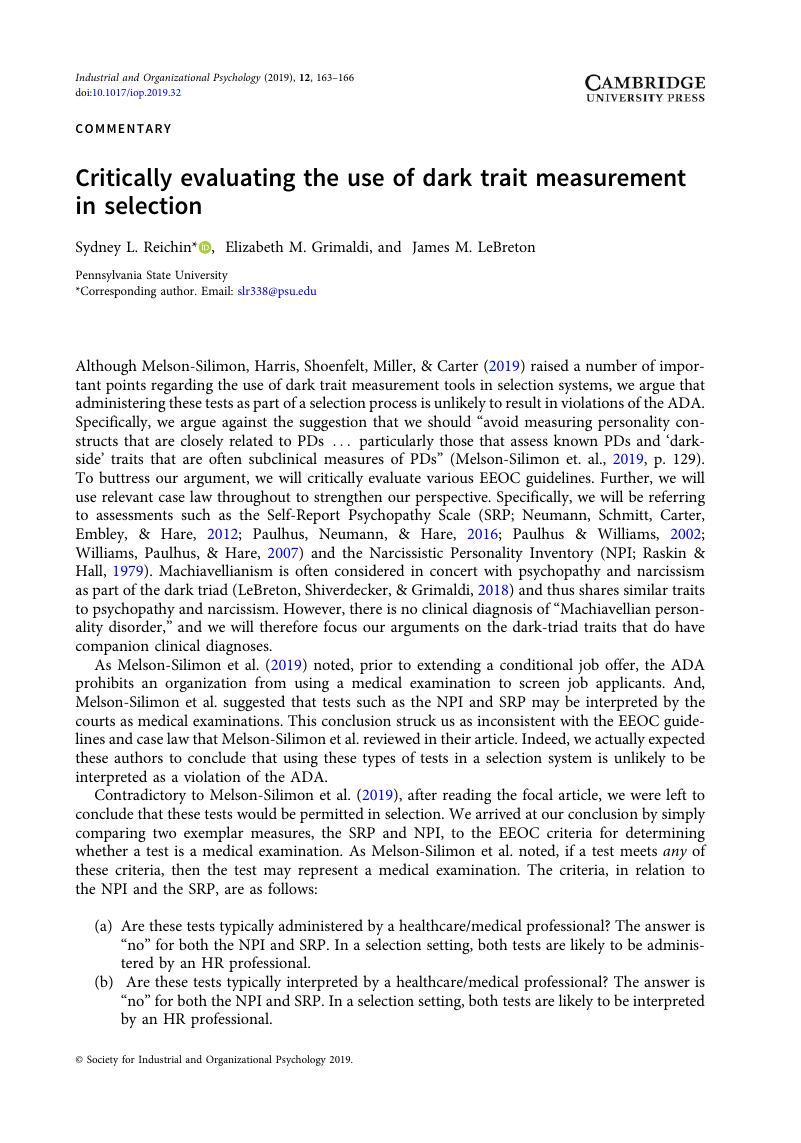Crossref Citations
This article has been cited by the following publications. This list is generated based on data provided by Crossref.
Baysinger, Michael A.
LeBreton, James M.
and
Campion, Michael A.
2025.
Toxic team climate: The causal role of psychopathic personality and lack of teamwork knowledge in dysfunctional team outcomes.
Group Processes & Intergroup Relations,



